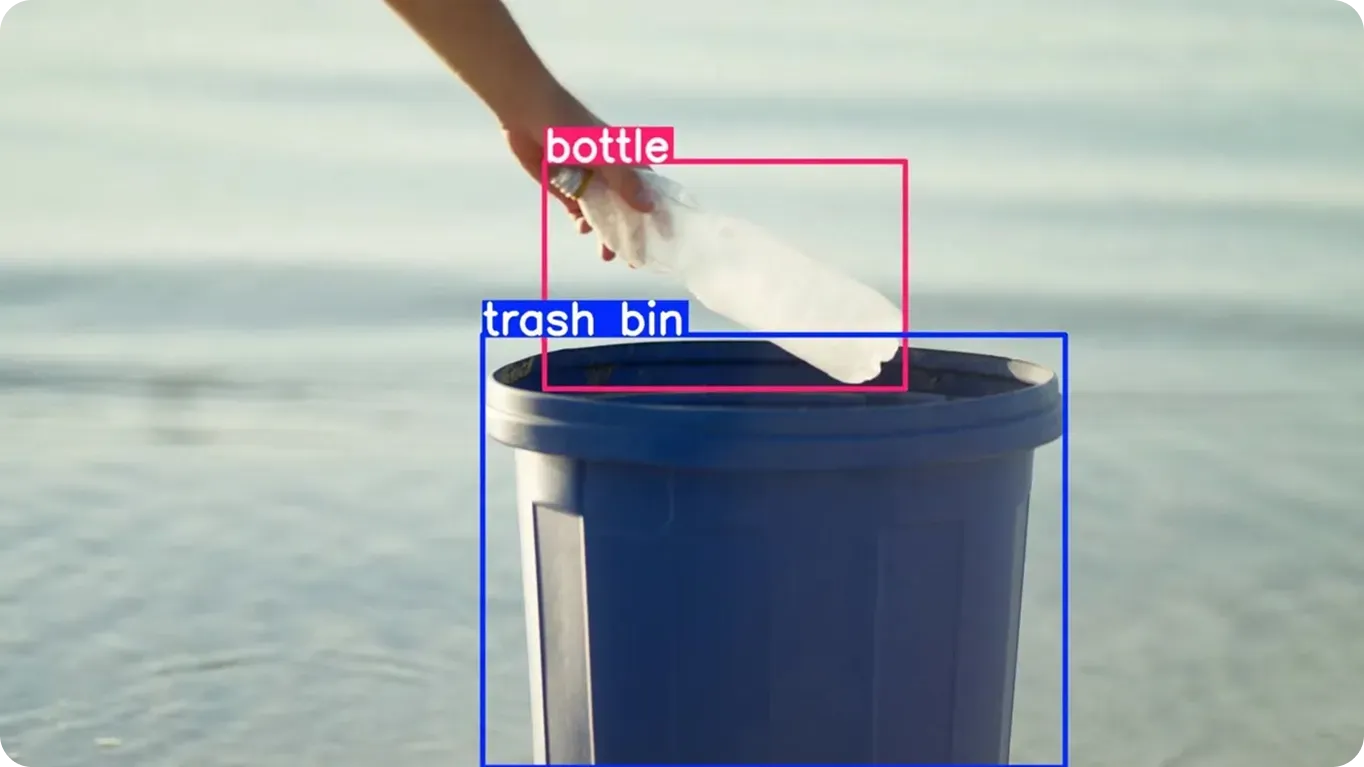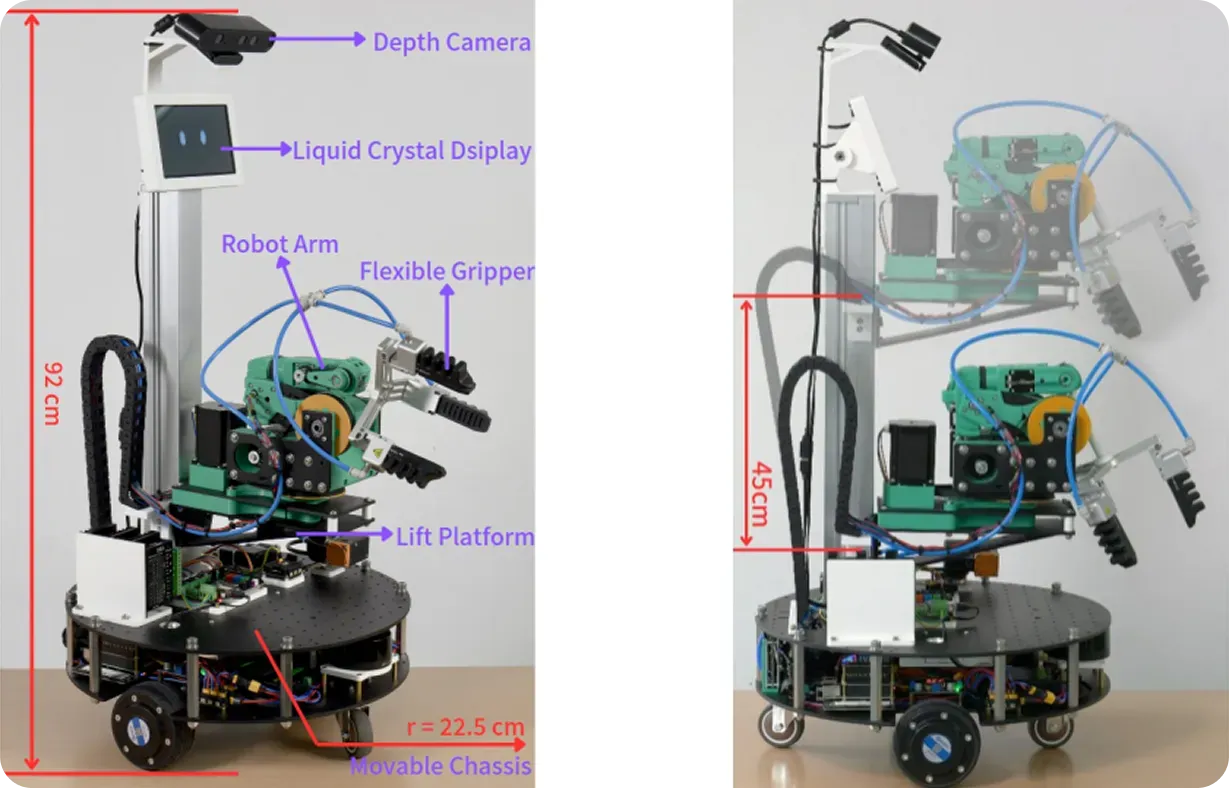Learn about seven future object detection trends driving advances in computer vision, enabling faster, smarter, and more reliable AI-powered systems.

Learn about seven future object detection trends driving advances in computer vision, enabling faster, smarter, and more reliable AI-powered systems.

Robotaxis are now roaming the streets of San Francisco, and people have gone from searching for answers online to chatting with AI as part of their daily routines. These shifts make it clear that artificial intelligence (AI) is moving faster than ever and becoming a part of daily life.
For instance, one of the areas moving forward at an incredible pace is computer vision technology. Otherwise known as Vision AI, it is a subfield of AI that focuses on helping machines interpret and understand visual data.
Computer vision is already showing up everywhere, from automated checkout lanes to drones surveying power lines. At the heart of many of these systems is object detection, a core computer vision task that enables machines to recognize and locate specific objects within images and video.
As AI adoption accelerates, so does the demand for object detection that’s both fast and precise. Vision AI models like Ultralytics YOLO11 and the upcoming Ultralytics YOLO26 have been built with this in mind, making real-time object detection more reliable and accessible than ever.

With this rapid progress, the field is evolving quickly, and several emerging trends are shaping what the next generation of object detection will look like. In this article, we'll explore seven key trends that are defining the future of object detection.
Before we dive into future object detection trends, let’s step back and look at what object detection is, how it works behind the scenes, and how it has developed over the years.
Object detection is a key part of computer vision that makes it possible for AI systems to identify what’s in an image and determine exactly where each item appears. To learn this, models are trained on large labeled datasets that show objects in many different conditions, like various angles, lighting, sizes, and layouts.
Over time, the model picks up the patterns and visual cues that separate one object from another. Once trained, Vision AI models like Ultralytics YOLO can scan an entire image in a single pass, instantly drawing bounding boxes and assigning labels. This speed and accuracy are what make object detection impactful across real-world applications.

For example, in document analysis, companies like Prezent use object detection to automate the challenging task of redesigning presentation slides. Traditionally, this process required hours of manual adjustments, identifying titles, repositioning text boxes, aligning images, and rebuilding charts, all while trying to maintain a clean, consistent layout.
By converting each slide into an image, Ultralytics YOLO models can detect titles, text boxes, images, and charts while preserving the original structure. This gives the system an accurate understanding of how each element is arranged. With that information, the entire redesign process, once slow and tedious, can now be automated in just seconds.
Here’s a quick look at how object detection has evolved over the years:
Next, let’s explore seven emerging object detection trends that are gaining attention and creating buzz in the computer vision space.
Traditional manual checks can slow down production lines and leave room for missed defects. To handle this, many companies are turning to AI-driven quality control systems powered by object detection.
In fact, studies show that AI-based visual inspection can significantly boost productivity, sometimes by as much as 50%, and increase defect detection rates by up to 90% compared to manual inspection. Interestingly, the new trend making waves in this space and other Vision AI applications is how this analysis is now happening directly on the devices themselves through edge computing.
With edge computing, intelligence moves closer to where the data is captured. Cameras and sensors can run object detection models on the spot, instantly identifying objects and determining their location without relying on cloud processing. This allows them to analyze frames in real time.
It also reduces network delays, cuts down on bandwidth usage, and ensures systems keep working even if the internet connection is unstable or unavailable. For fast-paced environments like manufacturing, this shift to on-device processing delivers quicker responses, smoother operations, and far more reliable outcomes.
Doctors often spend a lot of time reviewing medical images to make sure nothing is overlooked. Nowadays, many hospitals are starting to explore cutting-edge object detection technology to help speed things up. This reflects a broader trend in healthcare, where Vision AI is increasingly being used to support earlier detection, faster diagnosis, and more consistent image analysis.
Object detection can be used to quickly highlight areas that may need attention, enhancing decision-making and improving patient outcomes. For example, models like YOLO11 can help doctors spot brain tumors in MRI scans.

Since YOLO11 can recognize subtle patterns in MRI scans, it can help identify small or early-stage tumors with greater accuracy. While doctors make the final diagnosis, tools like YOLO11 can support streamlining their review by surfacing potential concerns sooner and helping ensure nothing important is missed.
On busy city streets, self-driving cars rely on cameras and sensors to continuously monitor their surroundings. These systems detect pedestrians, vehicles, lanes, and road signs in real time. With the help of computer vision and object detection algorithms, an autonomous car can interpret what’s happening around it and make safer autonomous driving decisions.
In regions with diverse traffic patterns and a mix of vehicles, these systems encounter added complexity. For instance, a recent study evaluated Ultralytics YOLOv8 models on traffic data collected from Hyderabad and Bangalore, where a variety of vehicles, such as cars, buses, motorcycles, bicycles, and auto-rickshaws, share the road in dynamic and often unpredictable ways.
The results showed that YOLOv8 performed strongly across these challenging scenarios, accurately detecting a broad range of objects even in dense and unstructured traffic conditions. This highlights a growing trend in autonomous mobility: Vision AI models are becoming increasingly capable of handling complex, real-world environments that once posed major challenges for automated systems.
Handling small objects, sorting detected objects and materials, or navigating cluttered spaces has always been challenging for robots. These tasks require quick adaptation and precise movement, something traditional automation systems often struggle with in unpredictable environments.
A growing trend in robotics is the use of Vision AI to give robots the ability to perceive and respond to their surroundings in real time. To explore this shift, a group of researchers recently developed a household robot capable of recognizing and sorting objects as it moved through indoor spaces.
Using models like YOLO11 for object detection, along with a depth camera and a flexible gripper, the robot was able to identify items of different shapes and sizes and place them in the correct locations on its own. This experiment shows how combining computer vision with robotic systems can improve spatial awareness and responsiveness.

It also demonstrates how cutting-edge AI techniques help robots adapt to unfamiliar environments by learning from visual patterns over time. With these advancements, robots are becoming more capable and more integrated into everyday tasks, from household assistance to warehouse logistics and healthcare support.
Smart surveillance systems are rapidly adopting artificial intelligence to spot unusual or unsafe activity. With object detection models, cameras can recognize potential issues in real time and alert security teams right away, helping improve both prevention and response.
For example, in manufacturing facilities where smartphone use is restricted for safety reasons, AI systems can automatically detect phones the moment they appear and track their movement using YOLO and other vision models. This reflects a wider trend in security, where Vision AI is being used to monitor environments more proactively and respond faster to potential risks.
Beyond detection, these systems are increasingly being combined with other technologies to create a more complete security solution. Edge devices allow footage to be processed locally, reducing delays and keeping performance reliable, while tools like access control systems or facial recognition can add an extra layer of verification. Together, these technologies work to create smarter, more connected surveillance networks that can respond quickly and effectively to real-world situations.
In busy warehouses and large retail spaces, workers often need to manage many tasks at the same time. Augmented reality helps by placing digital guidance directly into the real world. When paired with object detection, AR systems can identify items, track where they are, and display useful information in real time. This makes daily tasks easier, faster, and more intuitive for the people using them.
A growing trend in this space is the use of Vision AI to turn everyday devices into intelligent assistants that can understand their surroundings. As AR and object detection continue to merge, workplaces are beginning to adopt immersive tools that support hands-free guidance and more efficient workflows.
A good example is Amazon’s AI-powered AR glasses, which are currently being developed and tested. These glasses use object detection and image classification to recognize packages, guide workers along the correct route, and record proof of delivery. This creates a safer and hands-free experience that helps workers stay focused and efficient throughout the day.
Smart devices have become intelligent systems that can see, understand, and react to their surroundings. The Internet of Things (IoT) drives this shift by connecting cameras, sensors, machines, and smart apps into networks that collect and perform real-time processing of the data.
When IoT works together with object detection and edge computing, devices can interpret visual information, spot anomalies, and respond instantly without human involvement. This creates adaptive and efficient systems that power smart homes, industries, and entire cities.
For example, a recent study showed how an IoT-based wildlife protection system uses YOLOv8 to detect animals approaching farmlands. Once detected, the system uses AI-powered decision-making to trigger mild deterrents like lights or sounds, guiding animals away safely. This helps prevent crop damage while supporting peaceful coexistence with local wildlife, showing how IoT and computer vision can make agriculture more sustainable.
Other than these seven object detection trends, here are a few noteworthy developments shaping the future of Vision AI:
Object detection has grown far beyond basic image recognition and is now used to power intelligent systems capable of making decisions in real time. Looking ahead, future models will likely achieve even higher accuracy and a deeper understanding of context, enabling Vision AI to become even more reliable and versatile across industries. As these technologies continue to advance, they will shape a new generation of smarter, more adaptive computer vision systems.
Want to learn more? Join our community and explore the GitHub repository to connect with others in the AI space. Visit our solution pages on AI in robotics and computer vision for agriculture, and explore our licensing options to get started with Vision AI today.